Recently I was driving along a country road lined on one side by rich-green cypress trees that had been aesthetically shaped by nature.
However my eyes were drawn to the other side where there was a bushland reserve filled with riotous, wild, grey-green native foliage. It seems to me that while so many exotic trees and plants are spectacular and easy on the eye, our bush has a unique and subtle beauty, full of pleasures for the discerning eye. It has always interested me that early painters were unable to capture the difference, and reproduced our bush looking very dense, green and English.
Autumn, without the colourful leaves of cold-climate exotic plants, does however provide a challenge to see the special sights.
Recently I discovered that I had totally missed one subtle difference, even after years of observation. I had been enjoying the luscious clusters of dimpled, deep-red berries of Seaberry Saltbush Rhagodia candolleana subsp. candolleana, but was wondering why some bushes were so slow to bear fruit. Wrong…these will never do so as they are the male plants!
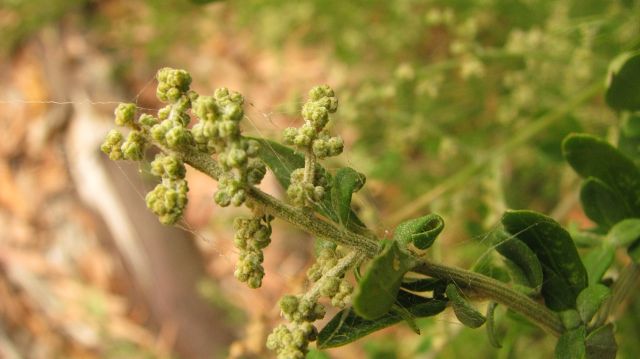
Seaberry Saltbush male
The Saltbush, like several local plants such as Clematis and many Rice-flowers, are dioecious, which means the male and female flowers are on different plants.

Seaberry Saltbush female
At the Microscope Group I found that, even under strong magnification, it was hard to see the difference between the male flowers and the buds of the young female plants of the Saltbush. So now is the time to get out and identify the male and female plants, while enjoying the sight of the colourful fruits of the female plants.
Nodding Saltbush Einadia nutans subsp. nutans is also intriguing as it has interesting arrow-shaped leaves a bit like the Saltbush but much finer, and it currently has clusters of tiny, but quite gorgeous, bright-red berries.
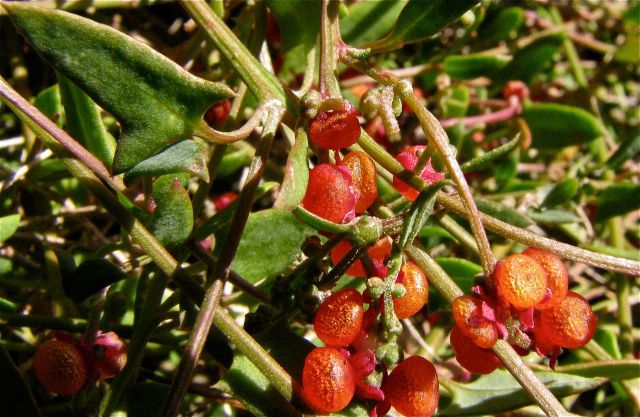
Nodding Saltbush
It is a wiry, ground-hugging plant so it may require hands, knees and a magnifier to be fully appreciated.
The ‘pioneer plant‘ Kangaroo Apple Solanum is displaying its autumn wares with quite large oval green to yellow-orange fruits which are smooth and tactile.

Kangaroo Apple flower and fruit
The leaves may have irregular finger-like lobes…like kangaroo feet? However beware of all our native fruits as, while being a wonderful food source for birds, they are mostly not edible to us non-aboriginal Australians, who do not have the special knowledge required for removing the toxicity.
Well what about flowers? On the coastal cliffs the smoky, grey-green bushes of Coast Daisy-bush Olearia axillaris have developed a yellowish hue, as the tiny lemon-coloured flowers appear in the leaf axils.

Coast Daisy
This plant is well worth a close look, feel, and smell of the crushed leaves…so many aspects to delight the senses.
Along the coast the bright green, tall bushes of Coast Everlasting Ozothamnus turbinatus are coming into flower with bunches of soft yellow flowers…discussed in ‘What’s the Difference.’
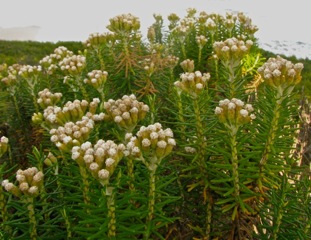
Coast Everlasting
These flowers also attract insects and colourful moths, so keep a lookout.
Finally in the heathlands look out for the flowers of Prickly Broom-heath Monotoca scoparia. These tiny flowers benefit from close inspection as they are also dioecious, the male flowers being a bit larger and with visible stamens.
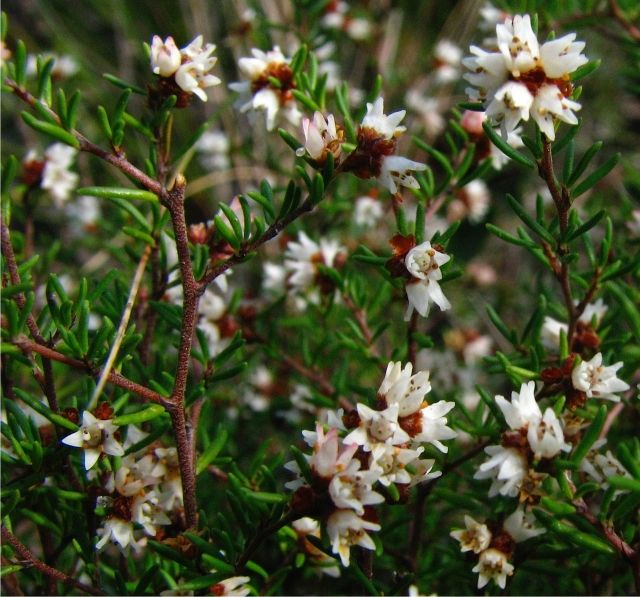
Male Prickly Broom-heath
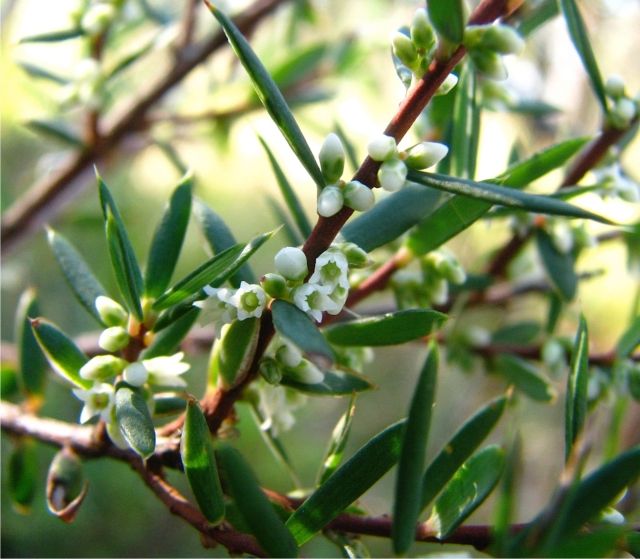
Female Prickly Broom-heath
What else is there to see? Who knows…keep a look out and you might see what the less discerning will miss!
Remember to carry ‘Flowers of Anglesea and Aireys Inlet’.